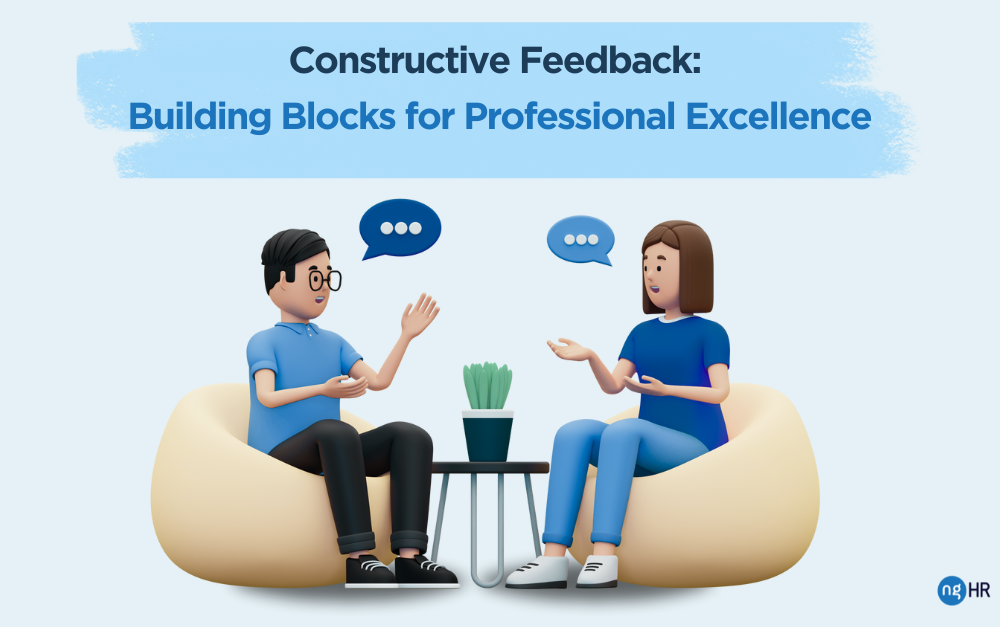
Delivering positive feedback is inherently easier to do since it entails acknowledging someone for their successes and positive traits, which likely boosts morale and fosters positive relationships. Giving constructive or critical feedback, on the other hand, can be more difficult. Constructive feedback should focus on areas that need to be improved and it must be done carefully to avoid adverse effects on the person receiving the feedback. This is not to say don’t give constructive feedback; it is more about being prepared to deliver constructive feedback in a manner that gets the right outcome.
To maximize the effectiveness of constructive feedback, it is crucial to handle the process with preparation and consideration. Here are some essential guidelines when giving constructive feedback that will help establish a receptive workplace that promotes growth and development:
- Establish trust – It is crucial to have an honest and reliable rapport because having a foundation of trust can help set the tone, making it easier for you to give criticism and for the other person to accept it and implement the suggestions you provide. It is hard to accept advice or criticism from someone you do not feel has your best intentions at heart; you want the person receiving it to understand that you value their work.
- Be timely – Do it as close as possible to the incident to ensure that the information is recent and relevant.
- Avoid blaming – Give comments using “I” statements. Instead of saying “You always,” use “I observed” or “I felt. Avoid using critical or accusing words that can make someone defensive or discouraged.
- Choose an appropriate time and place – To prevent the person from feeling exposed or humiliated, provide comments in a private place, and ensure that both of you are prepared to discuss the matter.
- Be specific – Be detailed and precise when describing actions or behaviors that require improvement. Avoid making broad generalizations or ambiguous comments that might be misunderstood.
- Be balanced – Prior to focusing on areas that need development, acknowledge the person’s hard work and successes. Try to keep a neutral viewpoint.
- Listen – Encourage two–way communication. Let them reply, ask questions, or request more information. Thoroughly look at their viewpoints and value their input.
- Be constructive – The goal of the feedback is to assist the person in improving. Do not criticise someone personally or make assumptions about their character. Instead, focus on the actions, decisions, or results that require improvement.
- Recommend solutions – Be willing to work with others on establishing objectives or implementing changes and provide thoughts or solutions for improvement.
- Do it in person – Instead of using email, text messages, or phone calls, it is preferable to give constructive feedback in person. Even if they are beneficial in other contexts, all these technologies are prone to misinterpretations since they take away crucial context cues like emotion, facial expression, body language, and vocal tone.
- Maintain confidentiality – Respect the person’s privacy by keeping the information confidential. Do not share the sensitive details of the discussion with other people in the workplace.
- Regular feedback – Having regular feedback in the workplace is beneficial for all members of the team in terms of expectations and performance. You can continue the discussion through follow-up conversations to track development and provide continued assistance.
While it might be difficult to hear constructive criticism, doing so presents an excellent chance for both professional and personal development. Here are some helpful suggestions for receiving and responding to constructive feedback effectively:
- Listen actively – Pay close attention to what the person providing the feedback says to you. Refrain from interrupting or defending yourself. Pay them your whole attention.
- Stay professional – Be professional throughout the feedback process, regardless of whether the input is highly emotional. Do not respond negatively or engage in conflict.
- Look for different viewpoints – To get a more complete picture of your performance or conduct, try to get feedback from a variety of sources.
- Reflect – Spend some time assessing the suggestions, their validity, and any possible areas for improvement. Consider constructive feedback as a great tool for learning and self-improvement. Accept it as an opportunity to improve your skills.
- Seek help – When you receive feedback, try to ask for their recommendations to develop an improvement strategy.
- Set realistic Goals – Establish goals for improvement based on the comments to ensure they are reasonable and doable.
- Track and share progress – Track your development and assess the outcome of the improvements you have made after getting feedback. If possible, inform the feedback provider of your progress, as necessary. This might demonstrate your dedication to personal improvement.
- Show gratitude – No matter what was said in the feedback, thank them for their input and effort. This expresses gratitude for what they have done to support your development.
Constructive feedback is the foundation of effective communication and professional development in the workplace. Employees may reach their full potential, consistently adjust to changing conditions, and maintain an advantage in today’s competitive workplace by mastering the art of giving and accepting constructive feedback. Constructive feedback should not be an event that happens once, but rather a continuous process.